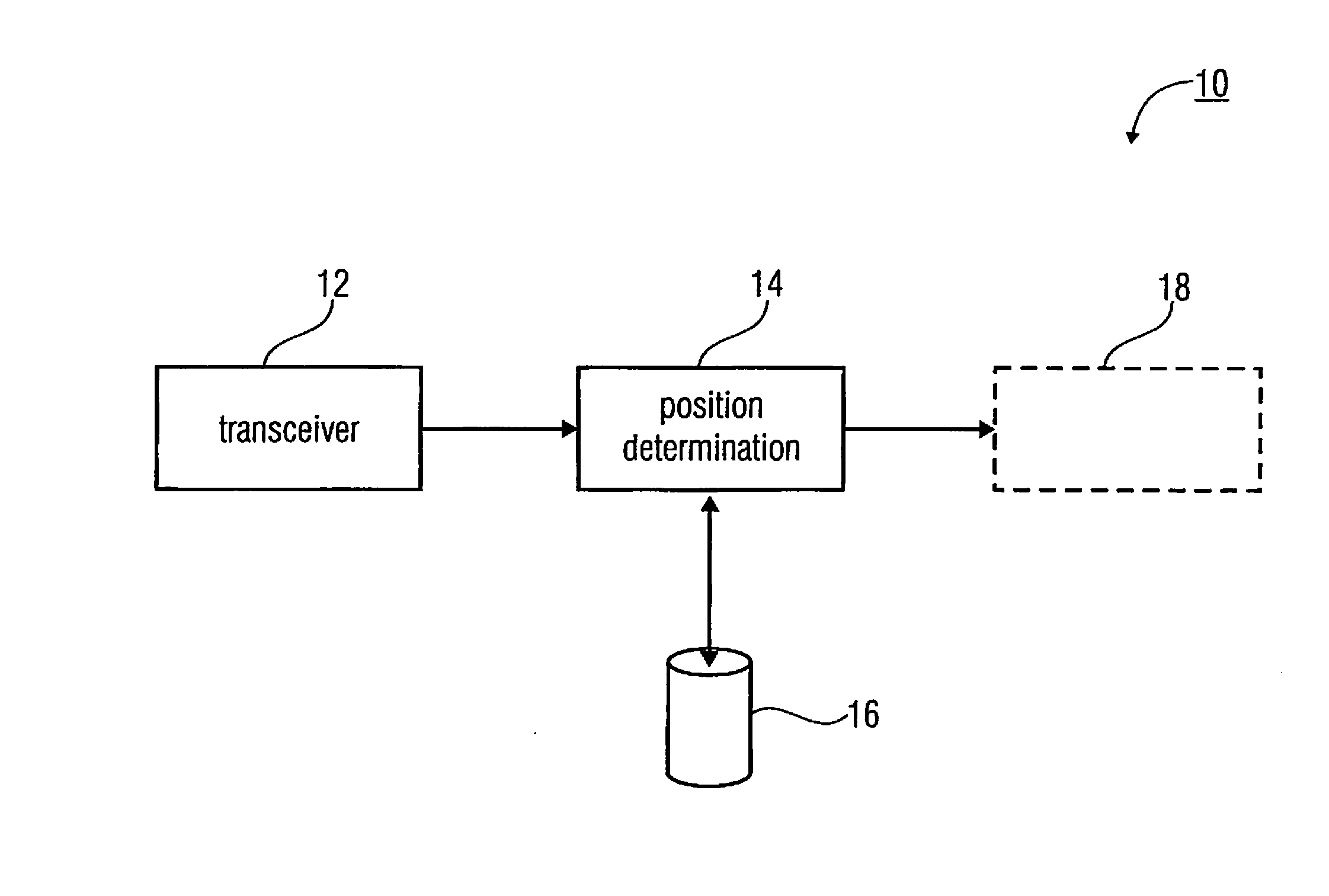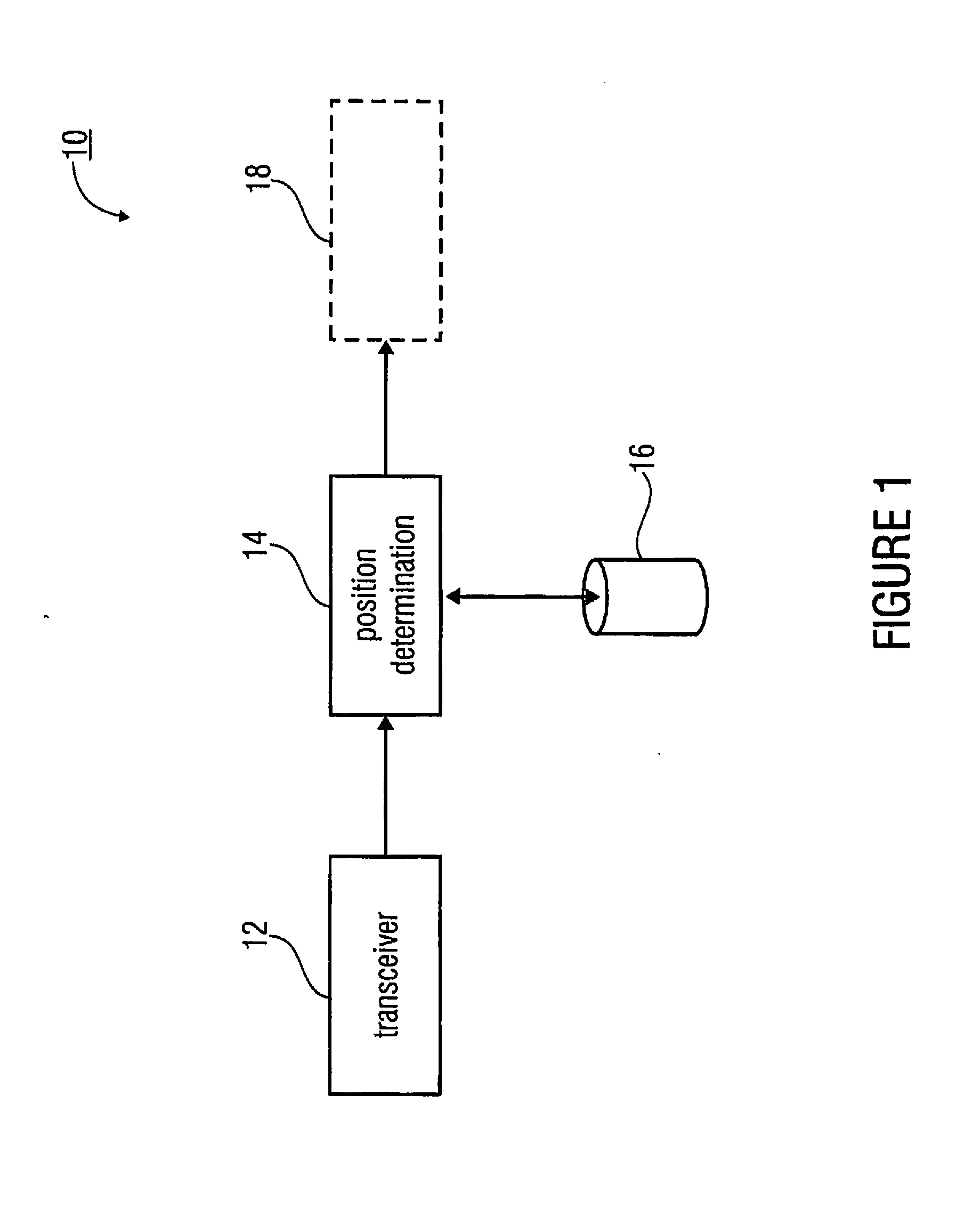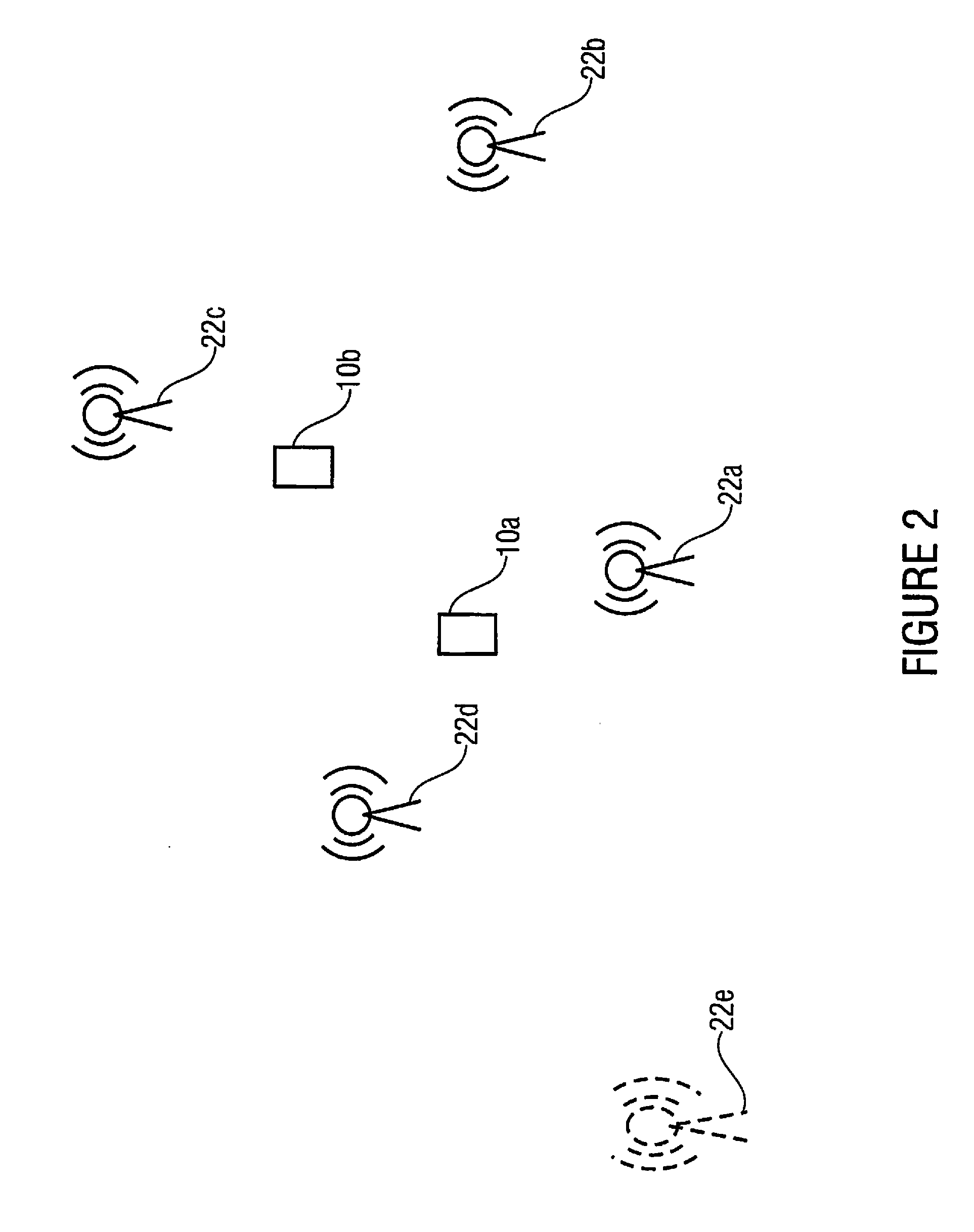Concept of generating experience messages for updating a reference database
a technology of experience messages and database, applied in the direction of direction finders, instruments, network topologies, etc., can solve the problems of not being able to directly deduce the distance to a base station or another communication partner, not being able to provide a position or only a very imprecise position, and not being able to provide ideal free-field conditions, etc., to achieve secure and highly precise localization, and low implementation cos
- Summary
- Abstract
- Description
- Claims
- Application Information
AI Technical Summary
Benefits of technology
Problems solved by technology
Method used
Image
Examples
Embodiment Construction
[0067]With regard to the following description, it should be kept in mind that same functional elements or functional elements having the same effect comprise same reference numerals in all the different embodiments and, thus, descriptions of these functional elements are mutually exchangeable in the different embodiments discussed below.
[0068]Localization in accordance with the fingerprinting method will be described below briefly making reference to FIGS. 1 and 2 to motivate the inventive concept which will afterwards be explained in greater detail referring to FIGS. 3 to 13.
[0069]The fact that the increasing spreading of non-public WLAN radio transmitters has meanwhile resulted in marked over-coverage in many cities is taken into account in particular. Eight to twelve radio transmitters (access points) can frequently be received in a single point, wherein even a number of 30 receivable radio transmitters may be exceeded in intra-urban regions (top values in busy places or areas o...
PUM
 Login to View More
Login to View More Abstract
Description
Claims
Application Information
 Login to View More
Login to View More - R&D
- Intellectual Property
- Life Sciences
- Materials
- Tech Scout
- Unparalleled Data Quality
- Higher Quality Content
- 60% Fewer Hallucinations
Browse by: Latest US Patents, China's latest patents, Technical Efficacy Thesaurus, Application Domain, Technology Topic, Popular Technical Reports.
© 2025 PatSnap. All rights reserved.Legal|Privacy policy|Modern Slavery Act Transparency Statement|Sitemap|About US| Contact US: help@patsnap.com



